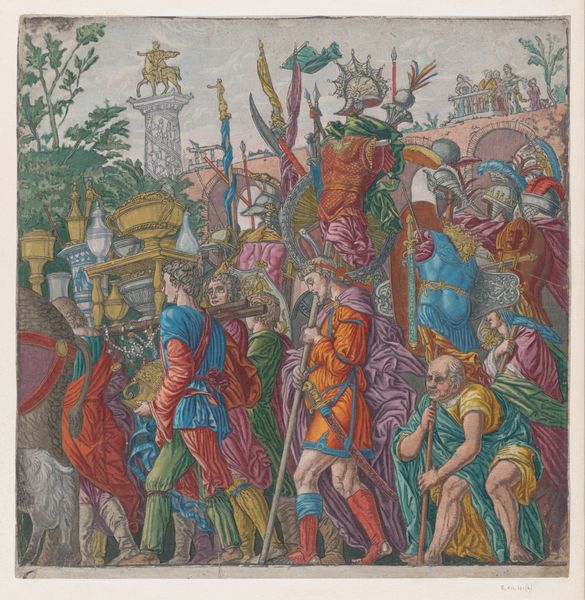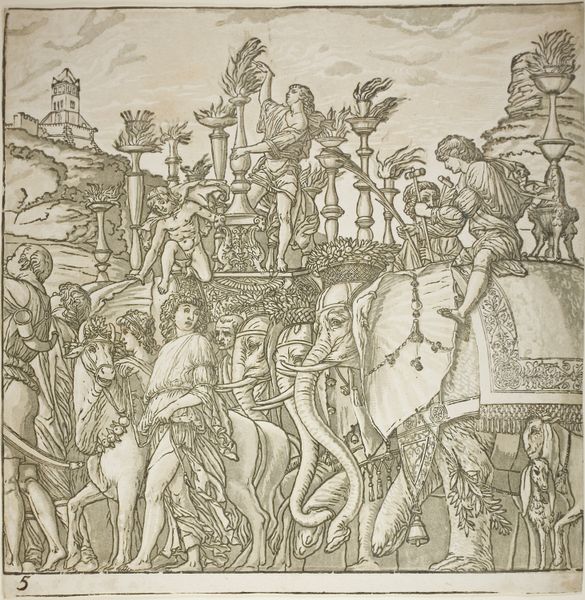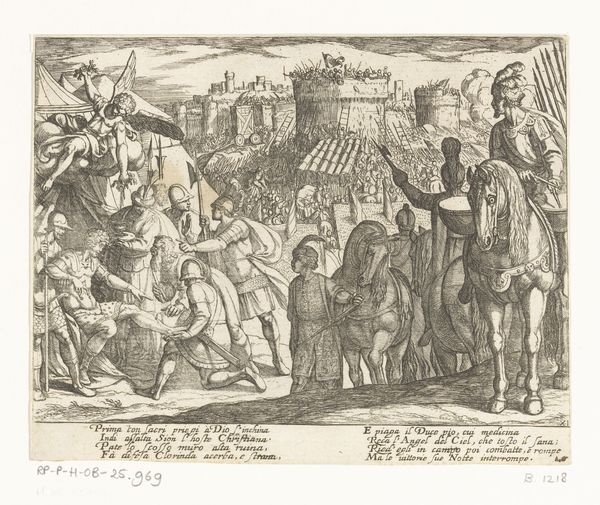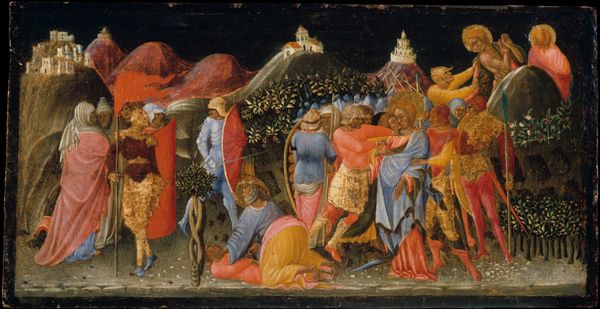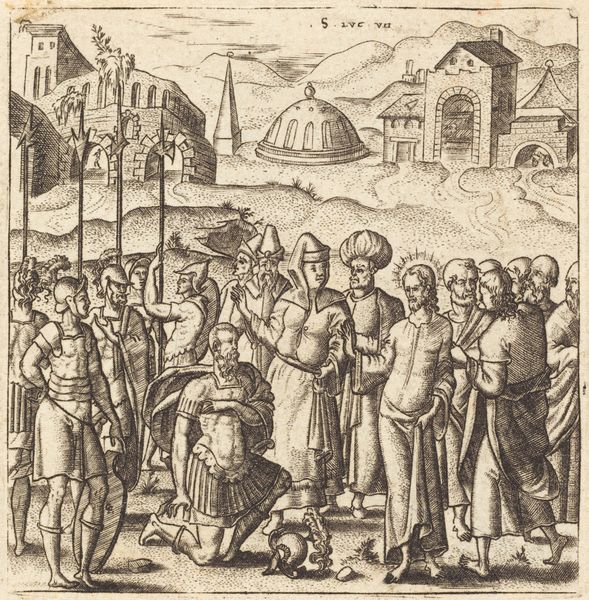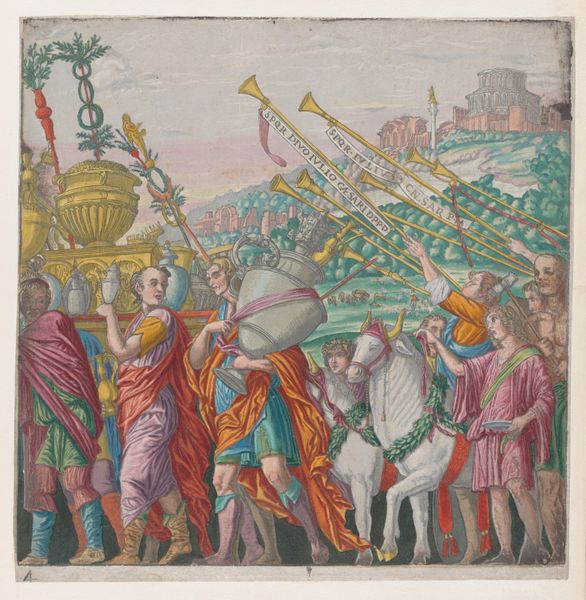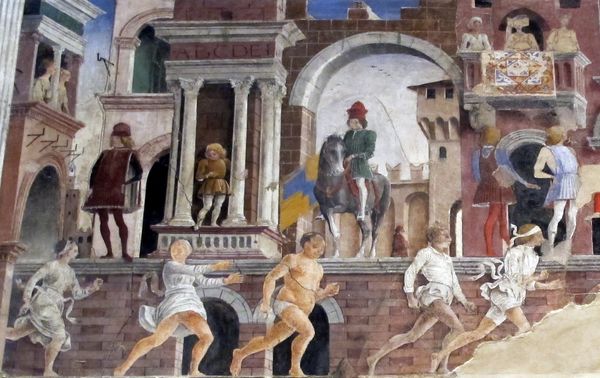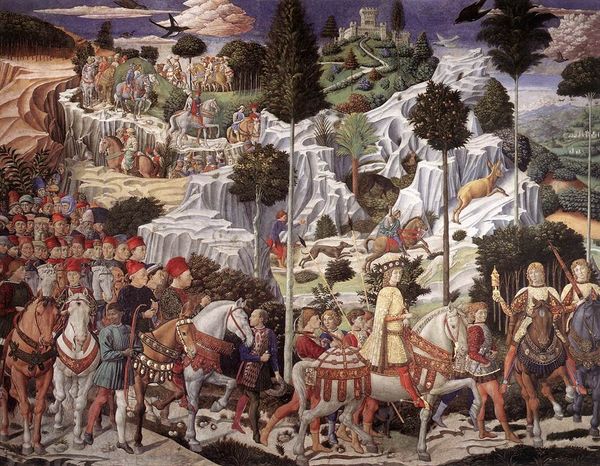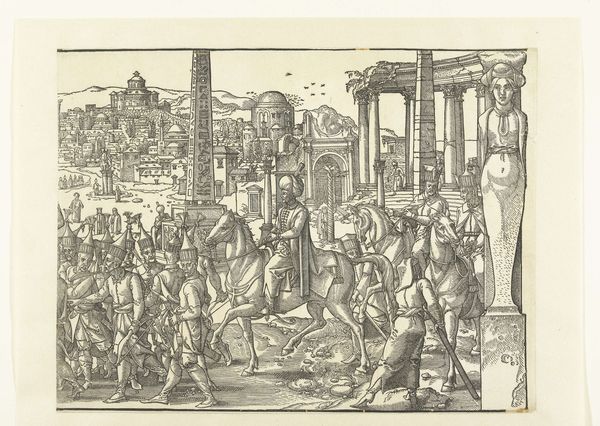
tempera, painting, oil-paint
#
narrative-art
#
tempera
#
painting
#
oil-paint
#
landscape
#
figuration
#
oil painting
#
classicism
#
history-painting
#
italian-renaissance
Copyright: Public domain
Editor: Here we have "Scena Di Trionfo All'antica" by Lo Scheggia, made with tempera and oil paint. It looks like a historical parade scene with classical architectural elements. The figures seem quite stiff and linear, and there is a lot of detail in the costumes and buildings. What elements of its formal composition stand out to you? Curator: Consider the arrangement of forms: the composition displays a clear division between foreground and background. Note how the figures are organized in a frieze-like manner. Observe the artist’s utilization of line. Is it not remarkable how linear precision defines form, often superseding concerns with naturalistic representation? Do you notice how line dictates form? Editor: Yes, the outlines are very sharp, making everything look quite flat, almost like a tapestry. Also, the perspective is... interesting. The buildings in the background seem almost stacked on top of each other. Curator: Precisely. We find, rather than adherence to mathematical perspective, a concern with decorative arrangement. The architectonic structures function less as believable space and more as a patterned backdrop, thereby framing the figures. Note, too, the employment of colour. How would you define the palette deployed? Editor: I see mainly earth tones – reds, browns, whites, with hints of green and gold to bring a little flourish. Curator: Precisely, the earthy tones, further emphasize a tactile quality of the work, focusing us away from representation and towards surface, towards medium, towards form itself. Editor: So, the flatness and slightly unrealistic perspective weren’t mistakes, but rather choices emphasizing the painting's formal qualities? Curator: Indeed. The painting’s visual language speaks not of spatial illusion, but rather an autonomous deployment of formal means. Editor: That's a really interesting way to see it. I hadn’t considered how those “choices” might actually contribute to the piece as a whole, focusing on the material itself, more than just the image portrayed. Curator: Absolutely. By analyzing these formal relationships, we uncover the true depth of the artwork.
Comments
No comments
Be the first to comment and join the conversation on the ultimate creative platform.



